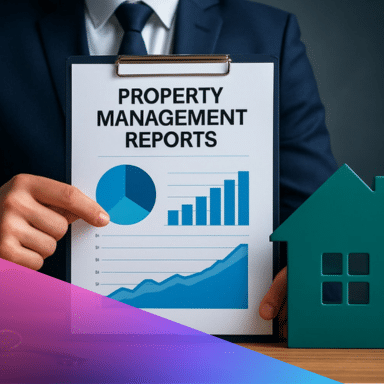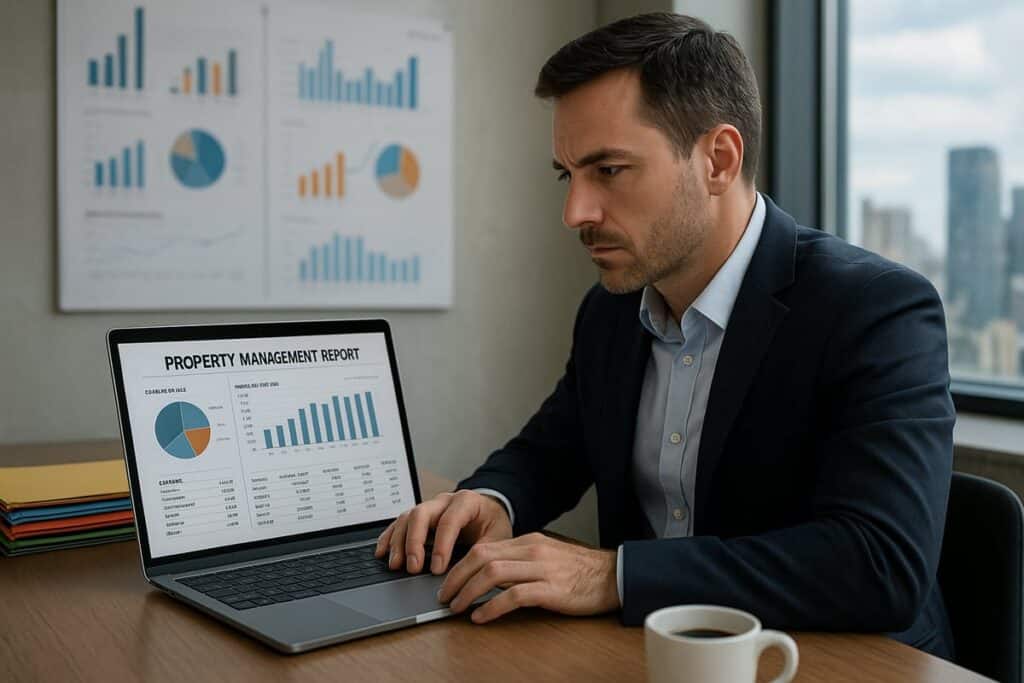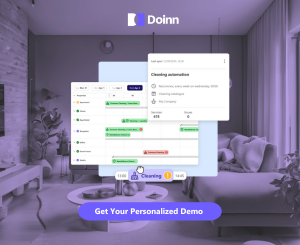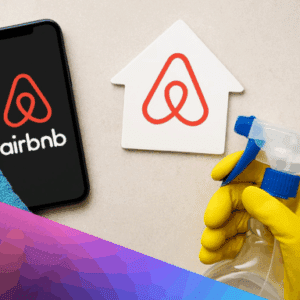7 Essential Property Management Reports for 2025 Success

The vacation rental industry is heading into 2025 with more competition, higher guest expectations, and increasing pressure for transparency with property owners. For medium and large property managers, property management reports are no longer optional, they are essential tools for data-driven decisions and building owner trust.
Yet, manual reporting and limited visibility into operations often leave managers struggling to prove ROI on staff, services, and property investments. In this guide, discover the 7 essential property management reports you need to optimize operations, empower your team, and keep owners confident in your results.
The Role of Reporting in Vacation Rental Management
Vacation rental property managers face reporting challenges that go far beyond those of traditional landlords. Managing more than 30 properties means juggling complex operations, diverse owner expectations, and the constant need to prove value.
In this environment, accurate and timely property management reports are not just helpful, they are essential tools for building trust and driving business growth.
Owners today want far more than simple revenue summaries. According to industry surveys, 85% of owners now expect monthly, detailed property management reports that cover everything from financials to operational activity. Meeting this demand is crucial for owner satisfaction and long-term retention, especially as competition intensifies in 2025.
One of the toughest hurdles for property managers is demonstrating the return on investment for staff, services, and operational expenditures. With rising labor and service costs, owners want clear evidence that every dollar spent is justified. Property management reports that break down these investments help managers show the direct impact on guest experience, property upkeep, and ultimately, revenue growth.
As vacation rental businesses scale beyond 30 properties, the need for robust property management reports becomes even more pronounced. Reporting systems must deliver insights across multiple units, highlight performance trends, and pinpoint areas for improvement. Without this level of detail, managers risk missing out on optimization opportunities that can boost both efficiency and profitability.
The consequences of poor reporting are significant. Consider the following risks:
| Risk | Impact |
|---|---|
| Owner churn | Loss of contracts and revenue |
| Compliance issues | Fines, legal exposure, reputation damage |
| Missed optimization | Lower occupancy, higher costs, lost profit |
A real-world example comes from a property manager who revamped their reporting process to provide clearer, more actionable data to owners. By implementing automated property management reports, they significantly reduced owner questions and improved satisfaction scores, resulting in higher retention rates.
Ultimately, effective property management reports are the backbone of operational efficiency and financial performance. They enable managers to identify trends, act on insights, and communicate value with confidence. For those seeking to enhance their strategy, exploring vacation rental reporting strategies can provide guidance on building a reporting system that meets the demands of 2025 and beyond.

What Makes a Property Management Report “Essential” in 2025?
In 2025, the definition of “essential” for property management reports is rapidly evolving. Owners and senior managers expect more than just data, they demand clear, actionable insights that drive decisions and prove ROI. With increased competition and rising guest standards, vacation rental managers must deliver reports that are not just informative, but also tailored to owner needs.
Criteria: Actionable, Transparent, Automated, Owner-Friendly
The best property management reports in 2025 share several key traits. They must be actionable, giving owners and managers clear next steps based on real data. Transparency is crucial, owners want to see exactly where income is generated, how funds are spent, and how their properties perform.
Automation is now non-negotiable. Reports should pull data from PMS, accounting, and operations platforms in real time, reducing manual effort and risk of errors. Owner-friendliness is equally important. Reports need to use clear language, visual summaries, and customizable layouts to ensure every owner, regardless of experience, can understand their property’s performance.
Technology, Customization, and Visual Dashboards
Modern property management reports rely heavily on technology. Integration with existing PMS and operations tools provides real-time updates and eliminates data silos. Predictive analytics and AI-powered insights are becoming the norm, allowing managers to spot trends and address issues before they become costly problems.
Customization is another growing expectation. Owners want to filter reports by date, property, or specific performance indicators. Visual dashboards and mobile accessibility have shifted from “nice-to-have” to “must-have,” making it easier for owners to review results anytime, anywhere. For a deeper dive into the types of reports that optimize property operations, see our essential property operations reports.
Meeting Owner Needs and Industry Trends
Essential property management reports must answer the questions owners care about most. Examples include: Is my property generating enough ROI? Are maintenance costs under control? How do guest reviews impact my revenue? Reports should also provide benchmarking data, helping owners compare their property’s performance to market averages.
Competitor research shows that the most-requested reports in 2024-2025 focus on financials, operations, guest experience, and compliance. As the industry grows, the ability to offer customizable, real-time, and visually engaging property management reports will be a major differentiator for medium and large vacation rental businesses.
7 Essential Property Management Reports for 2025 Success
In 2025, data-driven decision-making is non-negotiable for medium and large vacation rental managers. With rising owner expectations and tighter competition, delivering the right property management reports is the key to building trust, optimizing operations, and demonstrating ROI. Below, we break down the seven essential property management reports you need to master for lasting success, each tailored to solve critical business pain points and drive profitability.
1. Income & Expense Statement
The income & expense statement is the financial backbone of property management reports. It tracks every revenue stream, from nightly rent and guest fees to upsells like late checkouts, as well as all operational expenses, including cleaning, repairs, and utilities.
This report gives owners a transparent view of net profitability. By breaking down each cost category, managers help owners spot unnecessary vendor spend or rising utility costs. For instance, one property manager discovered that switching cleaning services led to a 15% cost reduction, boosting owner satisfaction.
According to industry data, 92% of owners rank the income & expense statement as their most important report. Automating this report through PMS and accounting integration ensures accuracy and saves staff hours. Visual aids like pie charts and monthly trend lines make the data accessible, even for owners without financial backgrounds.
Key benefits of including this report in your property management reports:
- Supports tax preparation and compliance
- Identifies cost-saving opportunities
- Reinforces operational transparency
Deliver this report monthly, and customize formats for each owner’s portfolio size.
2. Owner Statement
The owner statement consolidates all property activity into a single, easy-to-understand summary. It includes opening and closing balances, total income, categorized expenses, and distributions, making it a cornerstone of property management reports for clear communication.
Owners often feel overwhelmed by fragmented data. This report reduces confusion, builds trust, and minimizes back-and-forth questions. For multi-property owners, customizable statements that group properties or highlight specific metrics are invaluable.
A notable example: quarterly owner statements helped a manager increase retention rates by 22%. The key was clear, jargon-free language and the ability to customize detail levels per owner.
Best practices for this report:
- Use simple, concise language
- Offer both summary and detailed views
- Provide in monthly or quarterly frequency, based on owner preference
By delivering this report consistently, property management reports demonstrate your commitment to transparency and owner satisfaction.
3. Occupancy & Vacancy Report
Understanding occupancy trends is vital for maximizing revenues and owner satisfaction. The occupancy & vacancy report shows booked nights, average length of stay, and vacancy periods, helping you benchmark against market averages and spot seasonal dips.
For managers scaling portfolios, this report is essential for identifying underperforming units and adjusting pricing or marketing strategies. Properties with over 80% occupancy typically yield 30% higher owner satisfaction.
Integrating this report with dynamic pricing tools allows you to react in real time. Visuals like heat maps and calendar views make it easy for owners to grasp booking patterns. For up-to-date market context, consult industry benchmarks such as the Vacation Rental Industry Statistics 2025.
Pain points solved by this property management reports staple:
- Pinpoints low-performing properties
- Supports data-driven rate adjustments
- Builds owner confidence with transparent market comparisons
Deliver this report monthly or as needed during peak seasons.
4. Maintenance & Operations Report
The maintenance & operations report documents all maintenance requests, completed tasks, and outstanding issues. It is a vital part of property management reports, showing owners that you are proactive about asset care.
Track response times, costs, and recurring problems to demonstrate operational efficiency. For example, one manager proved that in-house maintenance staff resolved issues 25% faster than third-party vendors, directly improving guest reviews.
Industry data shows that fast maintenance resolution increases positive guest reviews by 18%. Use task management software to automate updates and provide real-time visibility to owners.
Key advantages of this report:
- Reduces owner anxiety about property upkeep
- Links operational efficiency to guest satisfaction
- Identifies recurring maintenance issues
Customize the frequency to match property type and owner preference, typically delivered monthly.
5. Rent Roll & Receivables Report
The rent roll & receivables report lists all current tenants or guests, lease terms, payment statuses, and aging receivables. This is a crucial inclusion in property management reports for monitoring cash flow and minimizing bad debt risk.
Early identification of overdue payments allows for quick intervention, reducing the risk of lengthy disputes or evictions. In fact, automated rent roll reports have been shown to reduce late payment rates by 25%.
Segmenting guests or tenants by unit or property type streamlines management for multi-unit portfolios. This report also supports cash flow forecasting and highlights potential collection issues before they escalate.
Components of an effective rent roll & receivables report:
- Payment status overview
- Aging receivables table
- Segmentation by property or guest type
Deliver this report monthly, and automate data collection through PMS integration for accuracy and efficiency.
6. Guest Experience & Review Report
The guest experience & review report aggregates all guest feedback, ratings, and reviews for each property. As part of comprehensive property management reports, it highlights operational issues impacting guest satisfaction and repeat bookings.
For example, addressing cleaning complaints in one portfolio improved average review scores by 1.2 stars. Properties with average reviews above 4.5 stars generate 20% more revenue, making this report vital for owner ROI.
Integrate this report with review platforms and guest communication tools. Use trend lines and word clouds to visualize feedback themes, making it easier for owners to see areas for improvement or celebrate successes.
Benefits of this report:
- Connects service quality to financial performance
- Identifies training or process gaps
- Drives continuous improvement
Share this report monthly, and tailor detail levels for each owner’s needs.
7. Compliance & Safety Report
The compliance & safety report tracks all regulatory requirements, including licenses, inspections, and insurance coverage. As a central part of property management reports, it reduces owner liability and ensures properties meet all legal standards.
Documenting safety incidents, remediation actions, and deadlines helps avoid costly compliance failures. Automated reminders can prevent missed inspections, as seen when one manager avoided fines by never missing a fire safety check.
With 60% of owners listing compliance as a top concern for 2025, this report should include digital checklists and audit trails. Use compliance tracking tools to automate updates and ensure nothing slips through the cracks.
Key inclusions:
- License and inspection status tables
- Safety incident logs
- Automated deadline reminders
Deliver this report quarterly or as regulations require, and customize formats for owner or property type.
How to Automate and Customize Your Reports for Owner Satisfaction
The landscape of property management reports is evolving rapidly. As portfolios grow, manual reporting becomes a bottleneck, making it difficult to provide timely, accurate insights for owners. Medium and large vacation rental managers face mounting pressure to prove ROI on staff and services, while also keeping up with complex operations. Automation and customization have become non-negotiable for delivering consistent, reliable property management reports that drive owner satisfaction.
The Benefits of Automating Property Management Reports
Automating property management reports delivers immediate benefits: improved accuracy, faster turnaround, and scalability as your portfolio expands. By eliminating manual data entry, you reduce errors and free up staff time to focus on higher-value tasks.
With automation, reports are generated and delivered on a set schedule, ensuring owners always receive up-to-date financials and operational summaries. This level of reliability boosts owner trust and minimizes the risk of missed insights. Automated systems also make it easier to track key performance indicators, such as maintenance response times or occupancy rates, across dozens of properties.
In a competitive market, automation is not just a time-saver, it is a strategic advantage for property management reports.
Customization and Integration: Meeting Every Owner’s Needs
Customization is essential for property management reports, especially when managing diverse portfolios and owner preferences. Owners want to filter data by property, date range, or revenue stream, and expect reports tailored to their individual goals.
Integrating your reporting workflows with PMS, accounting, and operations platforms is a must. This ensures that all relevant data flows seamlessly into your reports, minimizing data silos. Many leading platforms now offer customizable dashboards and owner portals, making it easy to deliver the right information in the right format.
For a practical overview of reporting tools and integrations, see this tool stack for vacation rental business guide. By leveraging these integrations, property managers can accommodate unique owner requirements, whether they need detailed expense breakdowns or high-level summaries.
Real-World Impact: ROI, Delivery, and Best Practices
Automated property management reports not only save time but also improve owner engagement. Scheduled delivery via email or secure owner portals means stakeholders always have access to the latest data. This transparency reduces back-and-forth questions and strengthens owner relationships.
Security and privacy are non-negotiable. Use platforms with robust data encryption and access controls to protect sensitive financial and operational data. As competitors move toward customizable, filterable reports as a standard, staying ahead with automation is crucial.
The real-world ROI is clear: property managers report saving hours each month and seeing an increase in owner retention thanks to timely, transparent reporting. Best practices include setting up regular report reviews, using visual dashboards for clarity, and continually refining templates based on owner feedback.
Best Practices for Property Management Reports
Presenting property management reports effectively is crucial to building trust and driving results for vacation rental owners. As portfolios grow, clarity and professionalism in reporting become even more important. Owners and senior managers want more than raw data, they want actionable insights and confidence their investments are performing.
Key Best Practices for Property Management Reports:
- Use Visuals and Executive Summaries: Incorporate clear charts, tables, and brief summaries at the top of each report. This helps owners quickly grasp key metrics and spot trends.
- Schedule Regular Review Meetings: Set monthly or quarterly sessions to walk through property management reports with owners. This creates space for open discussion and aligns expectations.
- Provide Actionable Insights: For each report, highlight what actions should be taken. For example, suggest adjusting rates based on occupancy data or scheduling preventive maintenance from operations findings.
- Maintain Transparency: Share both positive achievements and areas needing improvement. Owners value honesty, especially when discussing ROI on staff, services, or operational investments.
- Encourage Owner Feedback: Invite owners to share their questions and suggestions. Use their input to customize reports, making them more relevant and useful.
- Train Your Team: Ensure all staff members understand how to interpret property management reports and can communicate insights confidently.
- Stay Informed on Industry Trends: Keep reports up to date with evolving standards and technologies. Insights from the 2025 Vacation Rental Industry Outlook recommend leveraging new reporting tools to boost owner satisfaction.
Summary Table: Action Steps for Effective Reporting
| Best Practice | Action Example |
|---|---|
| Visuals & Summaries | Add monthly trend graphs |
| Regular Meetings | Schedule owner calls every quarter |
| Actionable Insights | Suggest pricing changes for slow periods |
| Transparency | Include both positive and negative trends |
| Owner Feedback | Add comment section in report portal |
| Team Training | Host quarterly staff training on reports |
| Industry Awareness | Subscribe to industry updates |
By consistently applying these best practices to property management reports, you can strengthen owner relationships, support better decision-making, and keep your business ahead of industry changes. Continuous improvement ensures your reporting remains a strategic asset for both operational excellence and long-term growth.
Ready to turn these insights into action and take your property operations to the next level in 2025? With everything we’ve covered, from the importance of automated, transparent reporting to the seven essential reports every property manager needs you have a clear roadmap for staying ahead. Let’s work together to make your reporting process smarter, faster, and more impactful.










